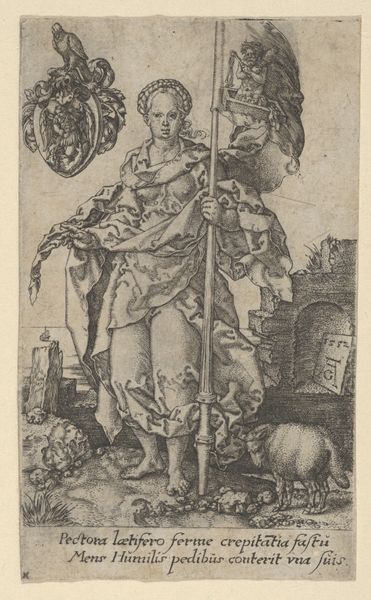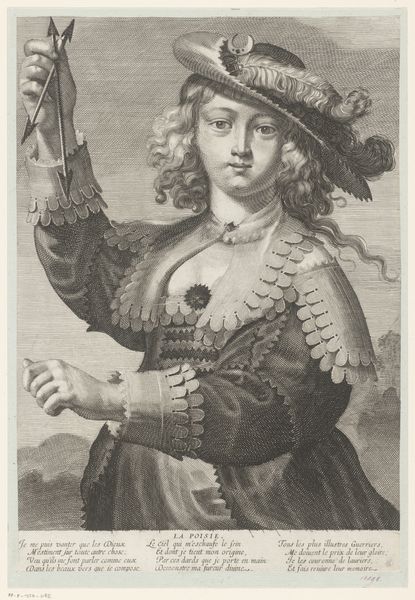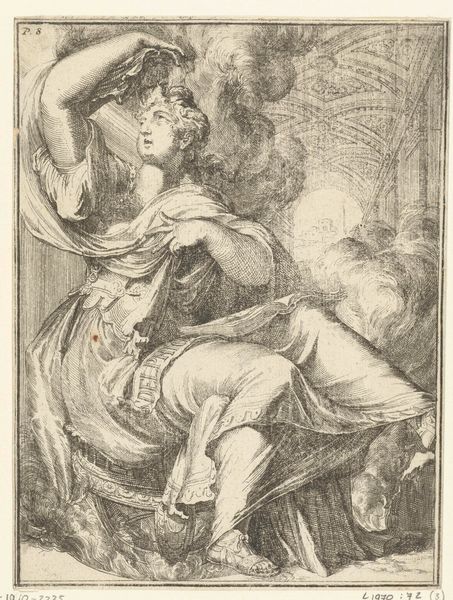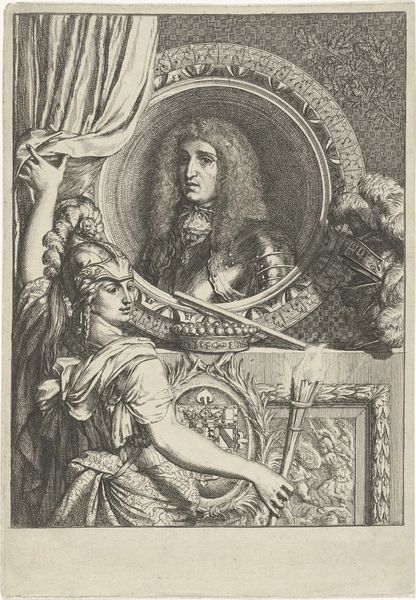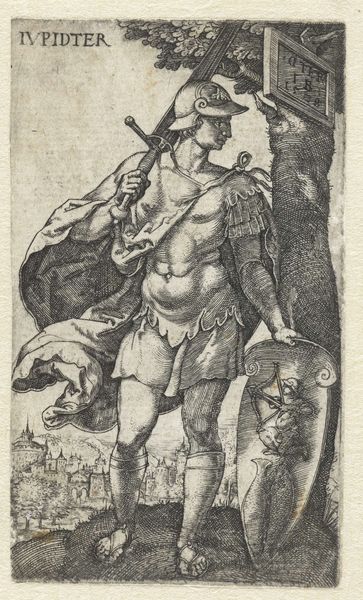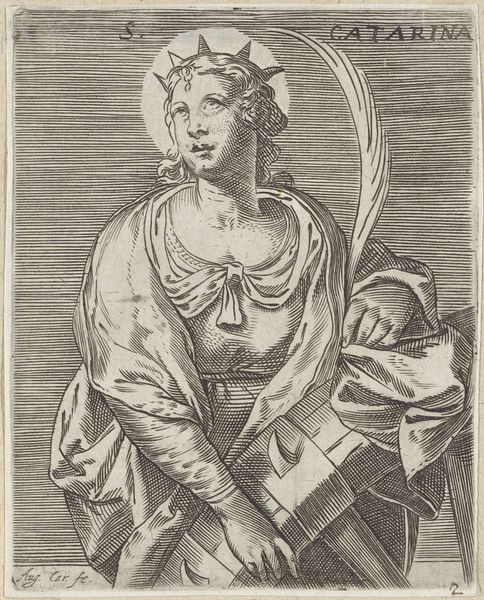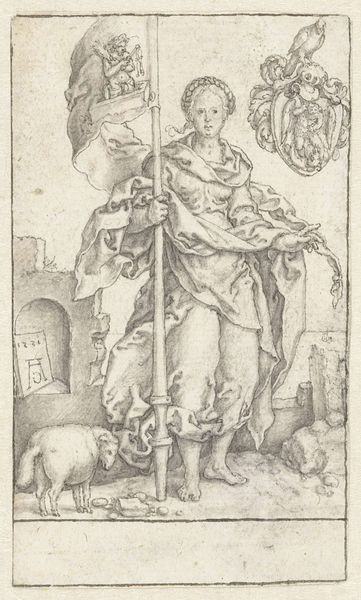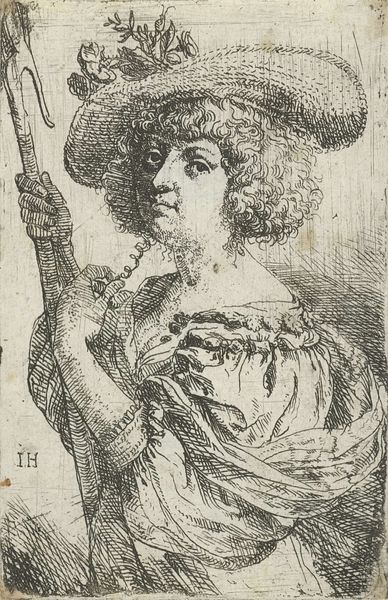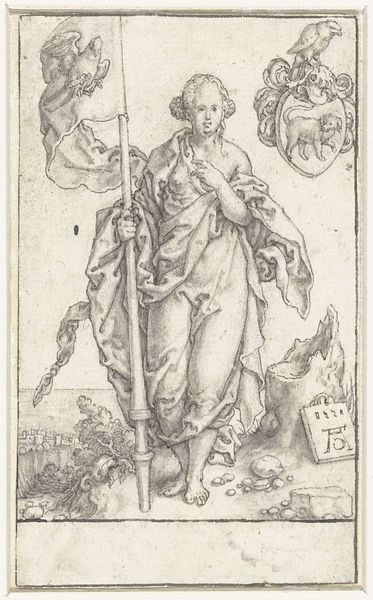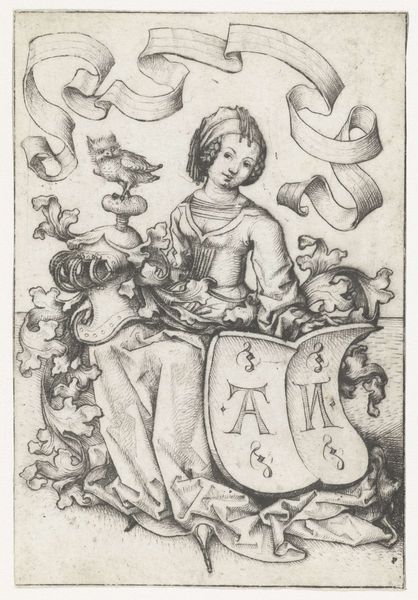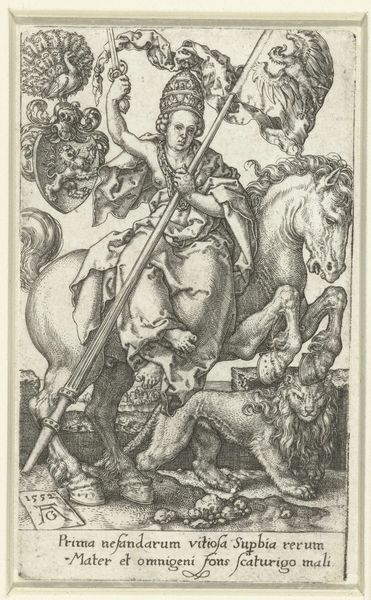
engraving
#
portrait
#
allegory
#
baroque
#
engraving
Dimensions: height 350 mm, width 261 mm
Copyright: Rijks Museum: Open Domain
Salomon Savery created this engraving, *Portrait of a Woman as Diana*, in the 17th century. During this time, the Dutch Republic experienced a Golden Age, marked by economic prosperity and cultural flourishing. Yet, this affluence was built on complex social hierarchies, colonial exploitation, and gender norms. Savery’s work draws upon classical mythology, representing the sitter as Diana, the Roman goddess of the hunt, wilderness, and the moon. Here, Diana, typically associated with chastity and independence, holds a bird, a symbol of power. Hunting dogs flank her body, and her strong gaze confronts the viewer. This engraving reveals the negotiation of identity, and the sitter’s attempt to embody power and independence, through the appropriation of classical symbols. But does this image challenge the status quo, or reinforce existing social structures? The woman portrayed might be claiming a sense of authority, but within the confines of societal expectations. Ultimately, Savery’s engraving serves as a reminder of the intricate relationship between identity, representation, and power dynamics.
Comments
No comments
Be the first to comment and join the conversation on the ultimate creative platform.
